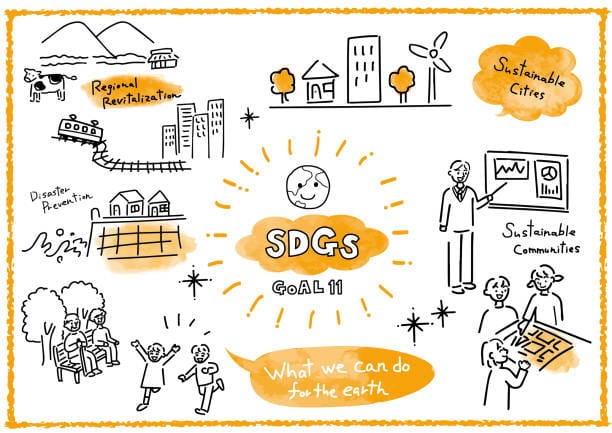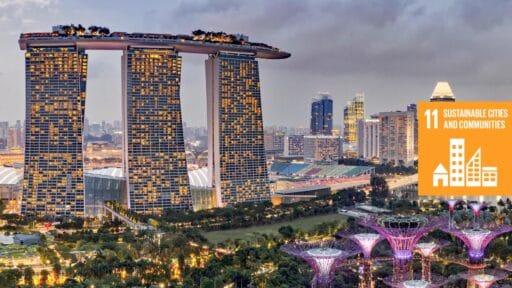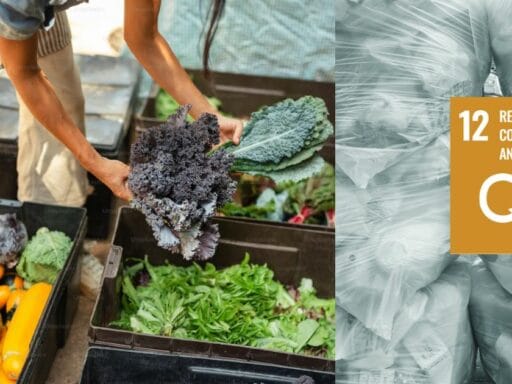With rising urbanization transforming the world, sustainable urban development has emerged as a critical component of a brighter future. The United Nations’ SDG Goal 11, named Sustainable Cities and Communities, seeks to develop inclusive, safe, resilient, and sustainable urban communities. This aim envisions a world where cities promote opportunity and equality while decreasing their environmental imprint by tackling issues like as congestion, pollution, and inadequate infrastructure.
The fact that more than half of the world’s population lives in cities, which is anticipated to climb to over 70% by 2050, emphasizes the relevance of SDG Goal 11. Achieving this aim entails not just urban planning, but also increasing the quality of life for millions of people while protecting the environment.
What is SDG Goal 11?
SDG Goal 11 focuses on making cities more inclusive and sustainable. It focuses on topics including affordable housing, efficient transportation, green areas, waste management, disaster resilience, and air quality. Urban areas are sites of innovation and economic progress, yet unrestrained expansion may result in inequality and environmental damage.
The key objectives of this aim are:
- Ensure that everyone has access to appropriate and affordable housing.
- Creating sustainable transportation solutions to alleviate congestion and pollution.
- Promoting resource-efficient cities that use renewable energy and produce minimal trash.
- Increased urban resilience to natural calamities and climate change.
SDG Goal 11 strives to establish cities that serve all of their people in an equitable and sustainable manner by aligning urban development with these objectives.
Targets and Indicators of SDG Goal 11
The aims of SDG Goal 11 provide a road map for achieving sustainable urbanization. This includes:
- Affordable Housing
Urban affordability is a major issue. Providing affordable housing for everybody promotes social stability and economic development. Key indicators measure the proportion of people living in slums or informal settlements.
- Sustainable Transportation Systems
Reliable and environmentally friendly public transit alleviates urban congestion and air pollution. This aim prioritizes accessibility for vulnerable populations such as women, children, and people with disabilities.
- Reducing Disaster Risk
Because of their high population density, urban areas are particularly vulnerable to disaster. Improving resilience through better infrastructure and disaster preparedness is critical to lowering vulnerability.
- Access to Green Spaces
Green places improve public health and well-being. This goal aims to ensure that urban people have equal access to parks and recreational places.
- Improving Air Quality and Waste Management
Air pollution and insufficient waste management are important urban concerns. Monitoring fine particulate matter levels and establishing effective waste disposal systems are key markers of progress.

Challenges in Achieving SDG Goal 11
Urban Inequality
Economic differences in cities provide uneven access to resources and opportunities. Informal communities frequently lack essential infrastructure, such as clean water, sewage, and power. Bridging this gap necessitates specific policies and investments in vulnerable populations.
Environmental Degradation
Urban regions generate a major part of global carbon emissions and resource use. Balancing growth and environmental protection is a vital task. To reduce their environmental effect, cities must implement sustainable practices such as green building and the use of renewable energy.
Rapid Urbanization
The rapid pace of urbanization in emerging nations frequently outpaces planning and infrastructure development. This causes overpopulation, transportation congestion, and demand on public services. Addressing these concerns requires comprehensive urban planning and investment in smart city technology.
Practical Steps
- Integrated urban planning
Effective urban planning requires collaboration among governments, the corporate sector, and communities. Mixed-use development and zoning rules can help to make cities more livable and sustainable. - Promoting renewable energy
Switching to renewable energy for urban utilities and transportation may dramatically cut emissions. Solar-powered streetlights and electric buses are examples of environmentally friendly urban efforts. - Community involvement
Empowering local communities ensures that urban development meets the needs and ambitions of the population. Participatory government promotes inclusion and accountability. - Investing in smart cities
Smart city technologies, like IoT-based traffic management and trash monitoring systems, improve urban efficiency and sustainability. These innovations have the potential to convert cities into magnets for sustainable living.
Case Studies of SDG Goal 11 in Action
Case Study 1: Curitiba, Brazil
Curitiba is regarded as a paradigm of sustainable urban development. The city’s revolutionary Bus Rapid Transit (BRT) system has decreased traffic congestion and air pollution while offering cost-effective public transit. Curitiba also encourages green areas, having about 50 square meters of vegetation per resident, which promotes environmental health and public well-being.
Case Study 2: Stockholm, Sweden
Stockholm has adopted extensive strategies to become carbon neutral by 2040. The city’s eco-districts, such as Hammarby Sjöstad, demonstrate sustainable urban planning through energy-efficient structures, renewable energy sources, and integrated waste management. Stockholm’s efforts exemplify how cities can balance growth with environmental stewardship.
Fherist Services
Fherist is at the forefront of developing innovation to help achieve SDG Goal 11. The organization’s primary contributions include a variety of SDG-related activities. Urban Data Analytics Policymakers benefit from real-time information about urban concerns such as traffic patterns, energy use, and garbage management. Sustainable Infrastructure Design Collaborating with governments and business developers to design environmentally sustainable buildings and transportation networks. Capacity Building Conducting seminars and training programs to provide urban planners and stakeholders with the tools they need for sustainable development. Fherist’s holistic strategy enables cities to change into inclusive, sustainable, and resilient communities.
FAQs
1. What is SDG Goal 11?
SDG Goal 11 focuses on making cities inclusive, safe, resilient, and sustainable, addressing issues like affordable housing and environmental conservation.
2. Why is SDG Goal 11 important?
Cities are the engines of economic growth and innovation. Achieving Goal 11 ensures improved quality of life for urban populations and mitigates environmental impact.
3. What are the main challenges to achieving SDG Goal 11?
Rapid urbanization, inequality, and environmental degradation are key challenges that require targeted interventions and sustainable policies.
4. How can individuals contribute to SDG Goal 11?
Individuals can support sustainable urban development by adopting eco-friendly practices, participating in community initiatives, and advocating for inclusive policies.
5. What role does technology play in SDG Goal 11?
Technology enables smart urban planning, efficient resource management, and real-time monitoring of sustainability metrics, accelerating progress toward SDG Goal 11.
Conclusion
SDG Goal 11 is essential for creating a future in which cities are dynamic, inclusive, and sustainable. This objective creates the foundation for revolutionary change by tackling issues such as urban inequality, environmental degradation, and fast urbanization. The goal of sustainable cities and communities may be realized via creative solutions, community participation, and global collaboration.
Fherist, together with governments, corporations, and individuals, play an important role in making this goal a reality. Together, we can develop urban areas that not only promote economic progress but also improve the well-being of their residents.








